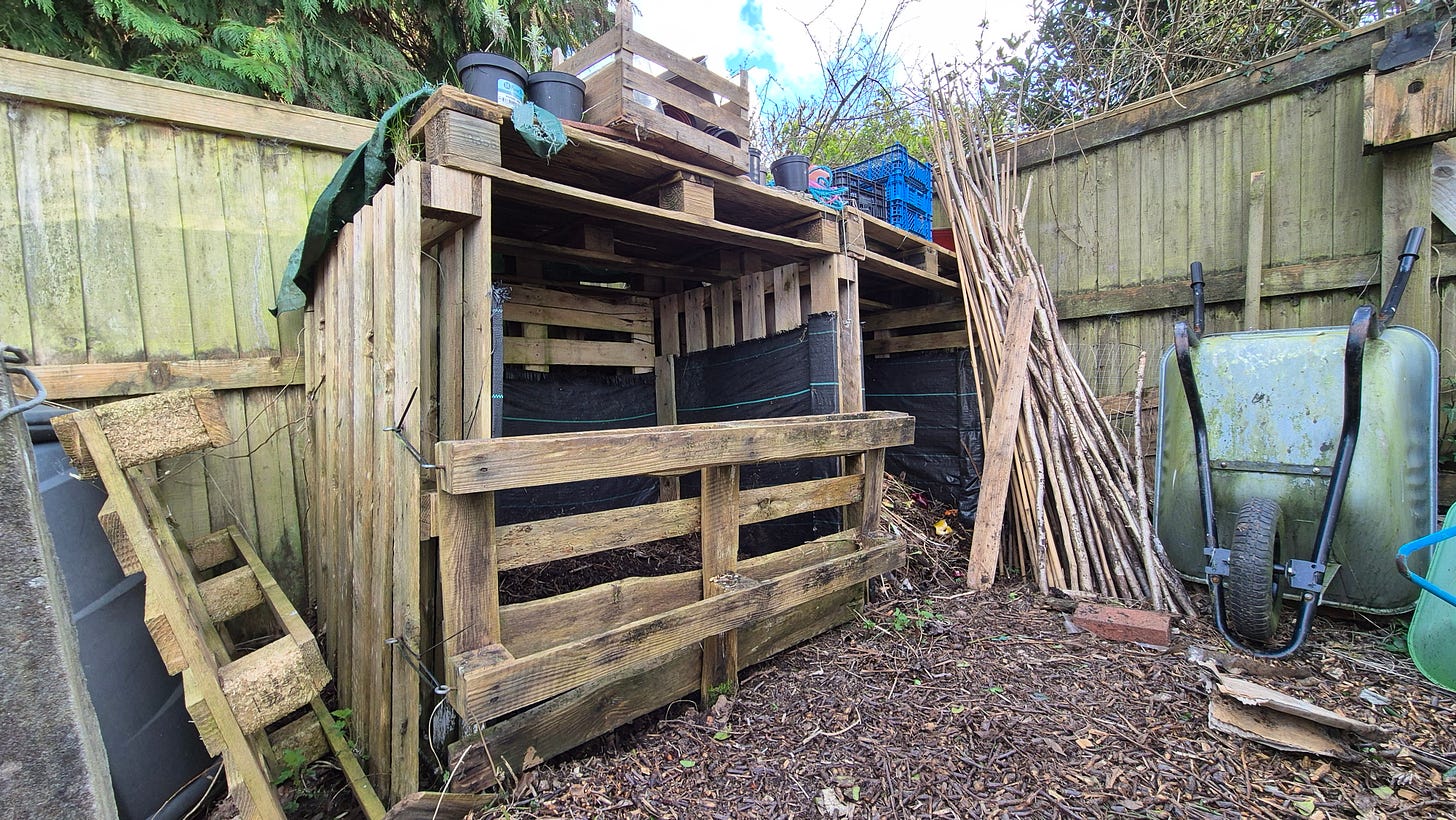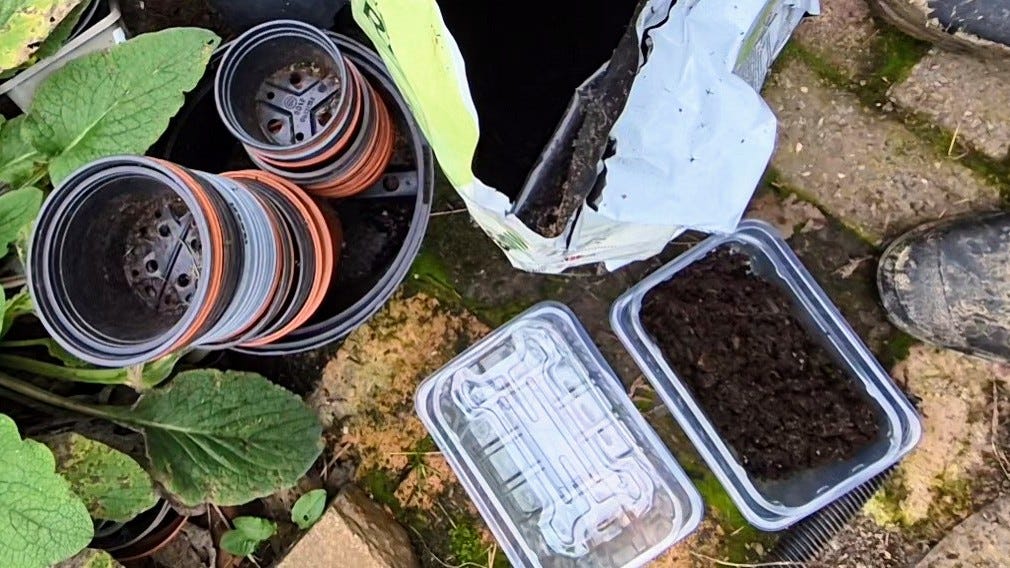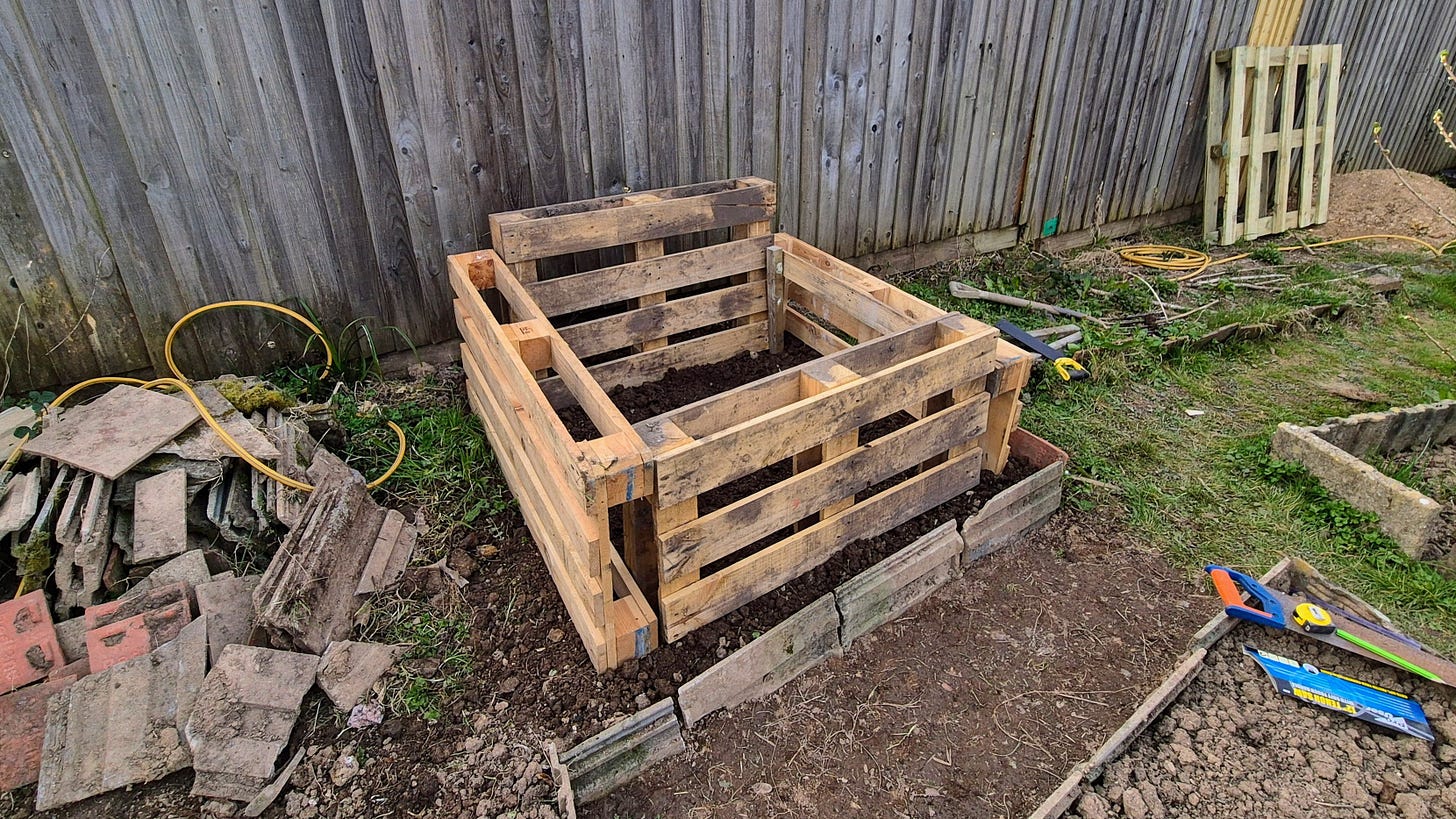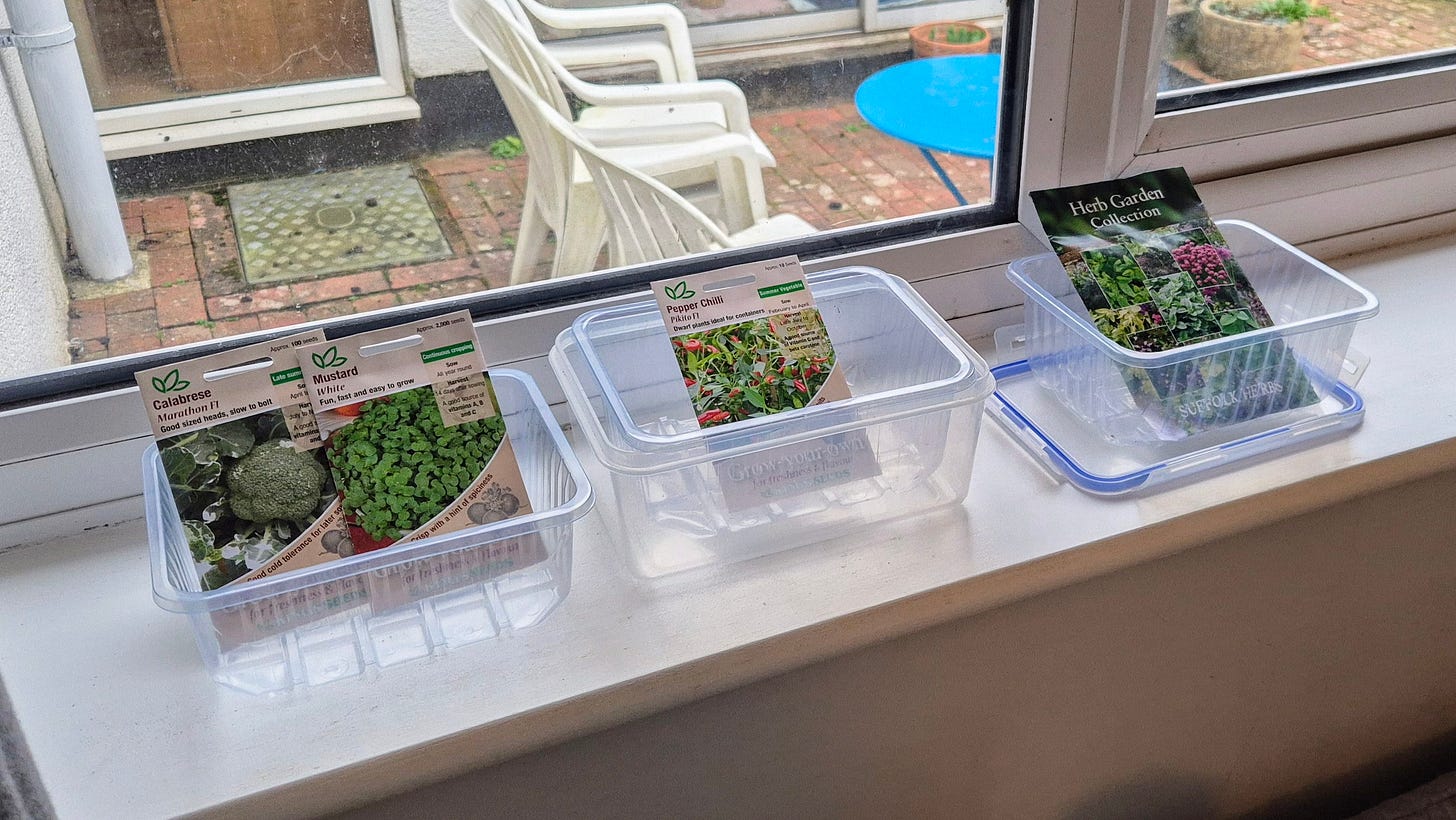Waste Not, Want Not: How Repurposing Builds Resilience
As I shift my mindset towards resourcefulness, I’m not only saving money and reducing waste… I’m also building practical resilience. Learning to make the most of what we have is a skill that pays dividends, whether in gardening, home projects, or everyday life.
Recently, I’ve been putting this into practice more intentionally: picking up cuttings and plants from my aunt’s garden (as she transitions to residential care), salvaging pallets for future projects, and finding new ways to reuse everyday materials. It got me thinking:
How much of what we buy and discard could actually serve a second (or third) life?
Here’s a look at how repurposing helps build financial, material, and overall functional resilience, along with some real-life applications that you can start using today.
1️⃣ The Mindset Shift: From Disposable to Durable
As I’ve written before (no doubt more than once), we live in a culture that prioritises convenience over sustainability, where single-use products dominate, and planned obsolescence keeps us locked into an endless cycle of consumption. But for those who want to be self-reliant, financially stable, and environmentally responsible, shifting towards durability and reusability is a game-changer.
Financial Benefits: Repurposing materials means spending less on replacements.
Resilience Boost: Knowing how to make do with what you have prepares you for uncertain times.
Reduced Waste: Every item that gets reused instead of trashed means less landfill and pollution.
Creative Problem-Solving: The ability to see value in what others discard is a highly adaptable skill.
The key? Pause before tossing something out. Ask yourself: Can I repair, repurpose, or upcycle this into something useful?
2️⃣ Everyday Repurposing in Action (Real-Life Examples)
Here are some ways I’ve been repurposing materials (and some ways I’m planning to add, but have not yet started) in my own home and garden setup - practical, low-cost, and easy to implement:
🌱 Gardening & Food Growing
✅ Chitting Potatoes in Egg Boxes – Egg cartons are the perfect structured holders for sprouting seed potatoes before planting.
✅ Seed Starting in Plastic Punnets & Mushroom Trays – Instead of buying seed trays, reuse old fruit punnets (with drainage holes added, if they aren’t already there).
✅ Cuttings & Dividing Plants – Propagating plants from my aunt’s garden (and from other areas of our own plot) not only saves money but preserves varieties with personal meaning.
✅ DIY Compost Bins & Raised Beds from Pallets – Reclaimed pallets can be transformed into compost enclosures, hot bed frames, garden furniture, or even fencing.
✅ Old Wellies for Planters – Worn out boots (or those which have been grown out of) make great mini planters when holes are added for drainage.
🛠 Home & DIY Projects
✅ Old Jars for Storage & Fermentation – Perfect for preserving, fermenting, and storing dry goods like rice and beans.
✅ Scrap Wood for Repairs & Builds – I’ve used salvaged wood for garden edging, and plan to use more for polytunnel repairs and shelving
✅ Glass Bottles as Candle Holders – I learned this one from a pub I worked at in Southampton, where every shelf was home to wax-covered Jack Daniel’s empties!
✅ Ripped Clothing as Rags – Old t-shirts and towels become cleaning cloths, paint rags, and workshop hand towels.
✅ Bike Inner Tubes for Elastic Ties & Straps – Cut-up rubber inner tubes work as heavy-duty rubber bands, plant ties, or tool grips.
🚲 Fixing & Upcycling Instead of Replacing
✅ Bike Repairs Instead of New Purchases – Instead of replacing a bike, I’ve learned to do a full 'M-check' and change an inner tube.
✅ Sharpening Tools Instead of Buying New – A sharp kitchen knife or garden tool lasts longer and works better than a cheap replacement (a multi-purpose sharpener and a bottle of mineral oil costs a lot less than new tools)
✅ Repairing Instead of Replacing Clothes – Learning to sew, patch, or reinforce means extending the life of your gear… this is one I’m yet to learn, but it’s on my list 👀
🔹 Small changes add up… what seems like ‘just one more item’ heading to landfill could actually have months or years of use left.
3️⃣ How to Build a Repurposing Habit
It’s easy to fall into the trap of keeping too much ‘just in case’, or hoarding things without a clear purpose. In fact, I got caught up in the fashionable version of ‘minimalism’ which requires binning everything you own, just because I was scared of hoarding. The key to effective repurposing is being intentional - here’s how:
🛠 The ‘Pause Before Tossing’ Rule
Before throwing something away, ask:
✔️ Can it be fixed or upcycled?
✔️ Could it be used for storage, gardening, repairs, or craft projects?
✔️ Would someone else find it useful? Donate it instead of binning it.
📦 Keeping an Organised Scrap Stash
Set a size limit – A small, organised stash is useful; a hoard is overwhelming. (This will obviously depend on how much space you have, as well)
Store like-with-like – Keep jars in one place, scrap wood in another, so it’s easy to find.
Label materials clearly – Saves time when looking for the right item.
🚮 Knowing When NOT to Hoard
While resourcefulness is great, hoarding is counterproductive. Perhaps aim to keep only what you can reasonably reuse within 6-12 months. If you haven’t used it by then, donate it or recycle it properly. All of this will depend on how much storage space you have, of course.
Final Thoughts: Building a Culture of Resourcefulness
Repurposing isn’t just about saving money or reducing waste… it’s about changing the way we think about consumption. The less we rely on disposable culture, the more adaptable and resilient we become. We can’t buy our way to resilience, but we can develop the mindset and skills to use what we already have to its fullest potential.
🌱 Next time you’re about to throw something out, take a second look… there might be a second life waiting for it.
🔒 For Paid Subscribers: The Repurposing Cheat Sheet
For those supporting this work, I’m sharing:
📌 A quick reference guide for repurposing common household materials.
📌 How to determine what’s worth keeping and what’s not.
📌 Easy-to-follow ideas for everyday upcycling projects.
And if you’re interested in amplifying your resilience with some one-to-one coaching, drop me an email.
Below this paywall 👇🏼 you’ll find the subscriber-only downloadable resources…






